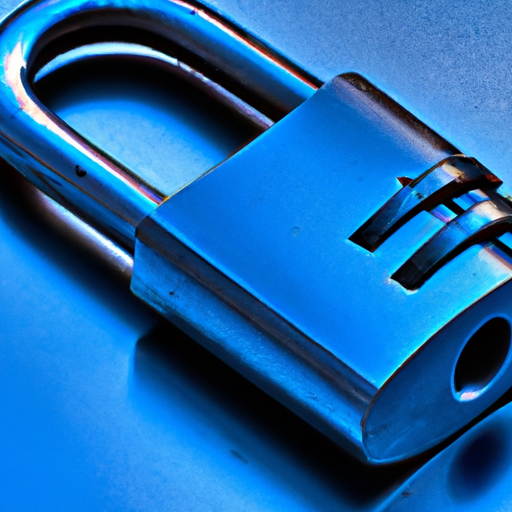How Do I Implement A Disaster Recovery Plan?
In order to effectively implement a disaster recovery plan, you need to understand the crucial steps involved. This article explores the key considerations and strategies for successfully implementing a disaster recovery plan. Whether you are a small business owner or an IT professional, this guide will provide you with practical tips and insights to ensure the resilience and continuity of your organization in the face of unexpected disasters. From assessing risks to establishing backup systems, this article covers everything you need to know to safeguard your data and minimize downtime.
Step 1: Assessing Risks and Impact
Identify potential risks and threats
The first step in implementing a disaster recovery plan is to identify the potential risks and threats that your organization may face. This could include natural disasters such as earthquakes or hurricanes, as well as man-made incidents like cyberattacks or power outages. Take the time to thoroughly analyze your business environment and identify any vulnerabilities that could leave your organization at risk.
Evaluate the impact on the organization
Once you have identified the potential risks and threats, the next step is to evaluate the impact that each of these risks could have on your organization. Consider the potential downtime, financial losses, and damage to your reputation that could occur. By understanding the potential impact, you can prioritize your recovery efforts and allocate resources accordingly.
Determine the acceptable downtime
In order to effectively recover from a disaster, it is essential to determine the acceptable downtime for your organization. This refers to the amount of time that your organization can afford to be without critical systems and processes. Different departments within your organization may have different acceptable downtime thresholds, so it is important to consider the needs of each department when determining the overall acceptable downtime. This will help guide your recovery efforts and ensure that you are able to resume operations as quickly as possible.
Step 2: Creating a Recovery Team
Select a disaster recovery coordinator
The first step in creating a recovery team is to select a disaster recovery coordinator. This individual will be responsible for overseeing the entire recovery process and coordinating efforts across all departments. It is important to choose someone who is knowledgeable about the organization’s systems and processes, as well as someone who has excellent communication and leadership skills. The disaster recovery coordinator will play a crucial role in ensuring that the recovery plan is effectively implemented.
Form a team with representatives from different departments
Once you have selected a disaster recovery coordinator, the next step is to form a team with representatives from different departments within your organization. This team should include individuals who have expertise in various areas, such as IT, operations, finance, and communications. By including representatives from different departments, you ensure that all areas of the organization are represented and that the recovery plan is comprehensive.
Define roles and responsibilities
In order to ensure a smooth recovery process, it is important to clearly define the roles and responsibilities of each team member. This includes identifying who will be responsible for coordinating communication, managing backups, and coordinating with external vendors or suppliers. By clearly defining roles and responsibilities, you will minimize confusion and ensure that everyone knows what is expected of them during the recovery process.
Step 3: Establishing Communication Protocols
Ensure effective communication channels
During a disaster, communication is key. It is essential to establish effective communication channels that will allow team members to stay informed and coordinate efforts. This may include setting up communication tools such as email, instant messaging, or video conferencing. It is also important to have a backup communication method in place in case the primary communication channels are unavailable.
Designate primary and backup communication methods
In addition to establishing communication channels, it is important to designate primary and backup communication methods. This ensures that if one method fails, there is a backup method available to keep communication flowing. For example, if email is the primary method of communication, consider setting up a secondary method such as phone or text messaging.
Create a contact list of key personnel
To ensure effective communication, it is important to create a contact list of key personnel. This list should include the contact information for all team members, as well as key stakeholders and external vendors or suppliers. Make sure to keep this list up to date and readily accessible to all team members. This will help facilitate quick and efficient communication during the recovery process.
Step 4: Backup Strategies and Data Protection
Identify critical data and systems
Identifying critical data and systems is a crucial step in implementing a disaster recovery plan. This involves determining which data and systems are essential for the organization to function and recover effectively. By identifying these critical assets, you can prioritize your backup and recovery efforts and ensure that they receive the highest level of protection.
Implement regular backups and storage solutions
Once you have identified your critical data and systems, it is important to implement regular backups and storage solutions. Regular backups help ensure that your data is protected and can be easily restored in the event of a disaster. It is important to establish a backup schedule that meets the needs of your organization and to regularly test the backups to ensure their integrity.
Consider offsite data storage or cloud backup
In addition to regular backups, it is also advisable to consider offsite data storage or cloud backup. Storing backups offsite helps protect against physical damage or loss of data in the event of a disaster at your primary location. Cloud backup offers the advantage of being easily accessible from anywhere and provides an additional layer of protection against data loss. Consider the needs and resources of your organization when determining the best backup and storage solution.
Step 5: Developing Recovery Procedures
Document step-by-step recovery procedures
Developing step-by-step recovery procedures is essential for a smooth and efficient recovery process. These procedures should outline the specific actions that need to be taken in order to recover critical systems and processes. Documenting these procedures ensures that everyone on the recovery team knows what steps to follow and helps minimize errors or delays during the recovery process.
Include instructions for each team member’s role
In addition to documenting step-by-step procedures, it is important to include instructions for each team member’s role. This ensures that each team member knows their responsibilities and can contribute effectively to the recovery effort. By clearly outlining each person’s role, you can avoid confusion or duplication of effort.
Periodically review and update the procedures
Once you have developed recovery procedures, it is important to periodically review and update them. This helps ensure that the procedures remain relevant and effective as your organization evolves. Regularly reviewing and updating the procedures also provides an opportunity to incorporate any lessons learned from previous recovery efforts and make improvements where necessary.
Step 6: Testing and Training
Conduct regular disaster recovery drills
Testing your disaster recovery plan through regular drills is essential for ensuring its effectiveness. These drills simulate various disaster scenarios and allow the recovery team to practice their response and identify any areas that may need improvement. By regularly testing your plan, you can uncover and address any weaknesses before a real disaster occurs.
Evaluate the effectiveness of recovery procedures
During the disaster recovery drills, it is important to evaluate the effectiveness of the recovery procedures. This involves assessing how well the team follows the documented procedures, identifying any areas where improvements can be made, and ensuring that the recovery objectives are met within the acceptable downtime. By evaluating the effectiveness of the procedures, you can continuously improve your plan and increase your organization’s resilience to disasters.
Provide training to all team members
In addition to testing the plan, it is crucial to provide training to all team members. This ensures that everyone understands their roles and responsibilities, as well as the overall recovery process. Training should cover not only the technical aspects of the recovery plan, but also the communication and coordination skills necessary for an effective recovery effort.
Step 7: Vendor and Supplier Preparedness
Assess the preparedness of vendors and suppliers
When implementing a disaster recovery plan, it is important to assess the preparedness of your vendors and suppliers. These external partners play a critical role in your organization’s recovery efforts, so it is important to ensure that they have their own disaster recovery plans in place. By assessing their level of preparedness, you can identify any potential risks and develop contingency plans to mitigate those risks.
Ensure they have their own disaster recovery plans
It is crucial to confirm that your vendors and suppliers have their own disaster recovery plans. This ensures that they will be able to continue providing their services in the event of a disaster. If a vendor or supplier does not have their own plan, consider working with them to develop one or identify backup vendors or alternate suppliers.
Establish backup vendors or alternate suppliers
To minimize the impact of a vendor or supplier disruption, it is advisable to establish backup vendors or alternate suppliers. This helps ensure that you have a contingency plan in place in the event that your primary vendors or suppliers are unable to fulfill their obligations. By having backup options available, you can minimize any disruption to your organization’s operations.
Step 8: Financial Considerations
Calculate the cost of downtime and recovery
As you implement your disaster recovery plan, it is important to calculate the cost of downtime and recovery. This involves estimating the financial impact that a disaster could have on your organization, including lost revenue, increased expenses, and potential damage to your reputation. By understanding the financial implications, you can allocate resources more effectively and make informed decisions regarding the implementation of your plan.
Determine the budget for implementing the plan
Once you have calculated the cost of downtime and recovery, the next step is to determine the budget for implementing the plan. This budget should cover the cost of any necessary equipment, software, or services, as well as any training or testing activities. By allocating a specific budget for your disaster recovery plan, you can ensure that the necessary resources are available when needed.
Consider insurance coverage for disaster recovery
Insurance coverage for disaster recovery is an important consideration for any organization. This type of coverage can help offset the financial impact of a disaster by providing funds to aid in the recovery efforts. It is important to review your existing insurance policies and consult with an insurance professional to determine if additional coverage is needed to adequately protect your organization.
Step 9: Documenting and Reviewing the Plan
Prepare a comprehensive disaster recovery plan document
Documenting your disaster recovery plan is crucial for ensuring that everyone involved in the recovery efforts understands the plan and their roles within it. The document should include contact information for key personnel, step-by-step recovery procedures, and any other relevant resources or information. It is important to keep this document readily accessible to all team members and regularly update it as needed.
Include contact information, procedures, and resources
The comprehensive disaster recovery plan document should include contact information for all key personnel involved in the recovery efforts. This includes internal team members, external vendors or suppliers, and any other relevant stakeholders. Additionally, the document should outline the step-by-step recovery procedures and provide access to any necessary resources such as backup plans, insurance policies, or vendor contacts.
Regularly review and update the plan
Once the disaster recovery plan has been documented, it is important to regularly review and update it. This ensures that the plan remains current and effective as your organization evolves. Regular reviews should include input from all relevant stakeholders and incorporate any lessons learned from previous recovery efforts. By regularly updating the plan, you can increase the effectiveness of your recovery efforts and better protect your organization from future disasters.
Step 10: Continuous Improvement
Monitor and assess the effectiveness of the plan
Implementing a disaster recovery plan is not a one-time event but an ongoing process. It is important to monitor and assess the effectiveness of the plan on a regular basis. This involves tracking key metrics, such as recovery time objectives and downtime, and identifying any areas that may need improvement. By monitoring the plan’s effectiveness, you can make informed decisions regarding any necessary changes or updates.
Identify areas for improvement and implement changes
As you monitor the effectiveness of your plan, it is important to identify areas for improvement and implement changes. This could involve updating procedures, modifying communication protocols, or enhancing backup strategies. By continuously striving for improvement, you can ensure that your organization is well-prepared to recover from any future disasters.
Stay updated with evolving technologies and threats
Finally, it is essential to stay updated with evolving technologies and threats. The landscape of technology and potential disasters is constantly evolving, and it is important to stay informed of any new developments or risks that may affect your organization. This could involve attending industry conferences, participating in training programs, or regularly consulting with experts in the field. By staying updated, you can proactively adapt your disaster recovery plan to effectively mitigate new risks and leverage new technologies.
In conclusion, implementing a disaster recovery plan involves a thorough assessment of risks and impact, the creation of a recovery team, the establishment of communication protocols, backup strategies and data protection, recovery procedures, testing and training, vendor and supplier preparedness, financial considerations, documenting and reviewing the plan, and continuously improving the plan. By following these steps and consistently reviewing and updating your plan, you can ensure that your organization is well-prepared to recover from any disaster and minimize the impact on your operations.








